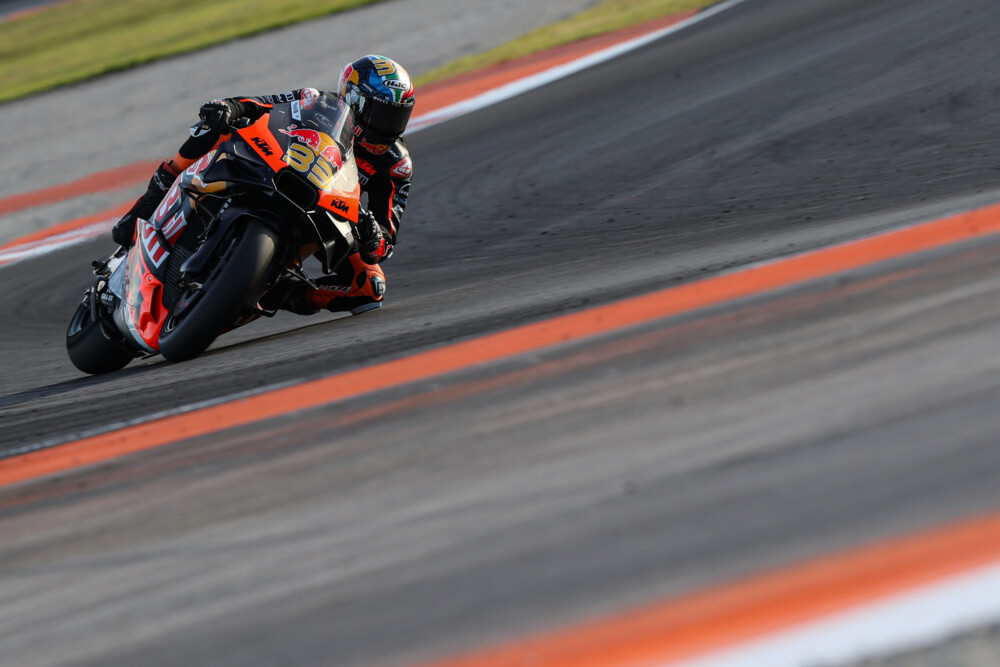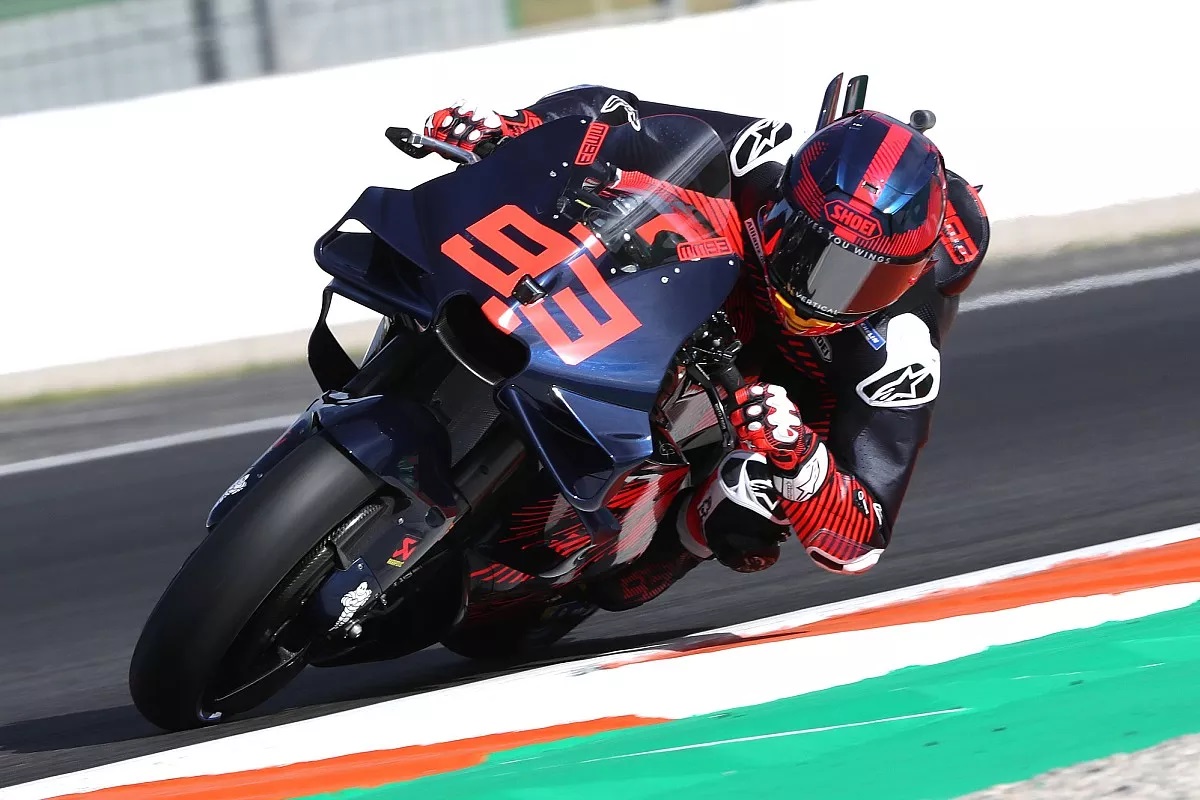Michael Scott | January 17, 2024
Cycle News In The Paddock
COLUMN
Will MotoGP’s Traitors Show The Way?
We are looking ahead at a 2024 season of transition. Some changes have already begun, others brewing, as yet in abeyance. By the end, there is the potential for far-reaching rider swaps and machine exchanges.
All but a handful of riders’ contracts are up at the end of 2024: the exceptions being Brad Binder (pictured below) at KTM until the end of 2026, Johann Zarco and Luca Marini at Honda at the end of 2025, and possibly the sole rookie Pedro Acosta, whose exact arrangement with GasGas/KTM is not clear.

It throws a greater focus on the five riders who have changed bikes from last season to this.
Five is not just an unusually large number. It’s a rarity. Nowadays, most riders tend to stick, and not just in the interests of a post-racing career. The dumb-down rules restricting such crucial matters as tires, cylinder numbers and bore size make the bikes ostensibly more similar. Paradoxically, this emphasizes the differences in detail. And detail is where the devil resides.
Riders frequently talk about the difficulty of switching marques. Tangible differences affect the crucial feel.
Most critical is engine architecture: V4 or L4—the latter now exclusive to Yamaha with Suzuki gone.
There are differences in throttle response and the way power is expressed, though these can be minimized by tuning and electronics. What cannot be altered is crankshaft width. An inline engine is unavoidably wider than a V and potentially taller, depending on how the V is disposed in the chassis. It must be mounted higher for ground clearance, which affects weight transfer in braking and acceleration but it’s not necessarily for the worse.
It is also shorter fore-and-aft, potentially another advantage.
Most significant, however, is the gyroscopic effect of a longer (wider) crankshaft.
Again, there are pluses and minuses. Broadly, the Yamaha can hold sweeping lines for higher corner speed; the V4s are more agile. At the limit, however, they feel completely different. Even among the V4s, subtle variations in firing intervals (the KTM is an 86-degree V, the others 90 degrees) change the feel.
Highest profile of the ’24 turncoats is Marc Marquez. His first test on a Ducati, two days after jumping off the Honda he’d ridden throughout an 11-year MotoGP career, might suggest that the change is easy. In unbranded black leathers and with a wicked grin he was straight up among the fast guys at Valencia.

But while over-weening self-belief is essential to anybody seriously competing in MotoGP, it needs to be tempered with at least a smidgeon of self-awareness. This translates into realizing that while Marc Marquez is not actually superhuman, his level of talent is something to aspire to rather than to consider easy to equal.
This is not so true of Marini and Zarco. They are at opposite ends of the spectrum of age and experience but share the risk in climbing off the demonstrably superior Ducati onto the demonstrably less competitive and often treacherous Honda. Of course, the RC213V can and surely will get better, but even the mighty HRC will need a bit of time. As well as a level of rider feedback that might prove as challenging as the more immediate task of staying on board.
Franco Morbidelli has the luxury of the same cushion as Marquez. He’s climbing off the hard-work Yamaha onto the class-leading Duke. With plenty to prove. Has the former Moto2 champ and erstwhile MotoGP title runner-up gone off the boil in the intervening slump on the uncompetitive YZR?
There’s just one other crossing the divide. Alex Rins, the worst injured of the Honda’s many crash victims, has managed to escape with a one-year deal to accompany Quartararo on a hopefully improved Yamaha.
Rins is a deep one. The only rider to win on a Honda last year, in the USA, a couple of races before breaking his leg badly at Mugello, he has the comfort (if it is such) of returning to an inline engine, very like that one he used to excel on at Suzuki. If Yamaha has managed to find the key to solving their complicated problem—that when they improve the power to match the others, the sweet handling goes to pot—he could give Quartararo a headache.
Everyone will be eyeing these changelings very closely, for during this year will come the chance for others to change as well. On current form, most will want either to switch to Ducati or to stay there. But there are other intriguing possibilities.
How about KTM and Marc Marquez?
If the Austrian brand can sustain last year’s level of improvement, then it should be fully competitive with Ducati in 2024.
And why should they not add Marquez to their lineup and become a new dominant force? CN
Click here for all the latest MotoGP news.